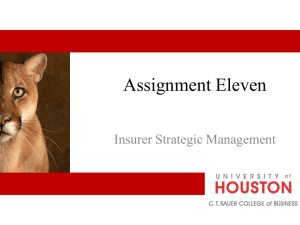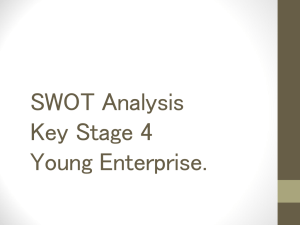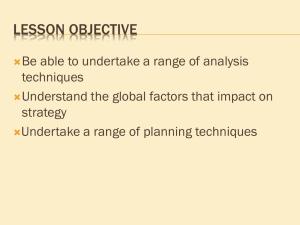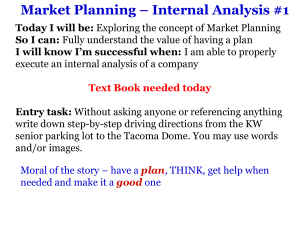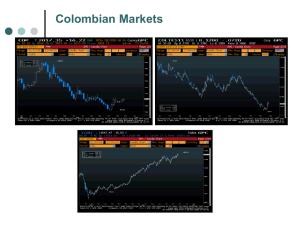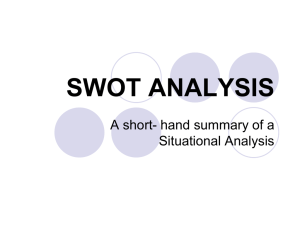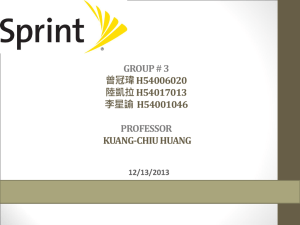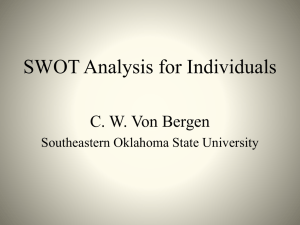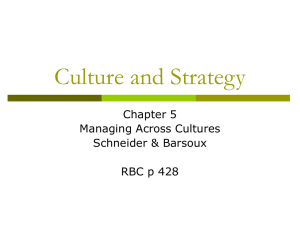MC -Chapter 4
advertisement
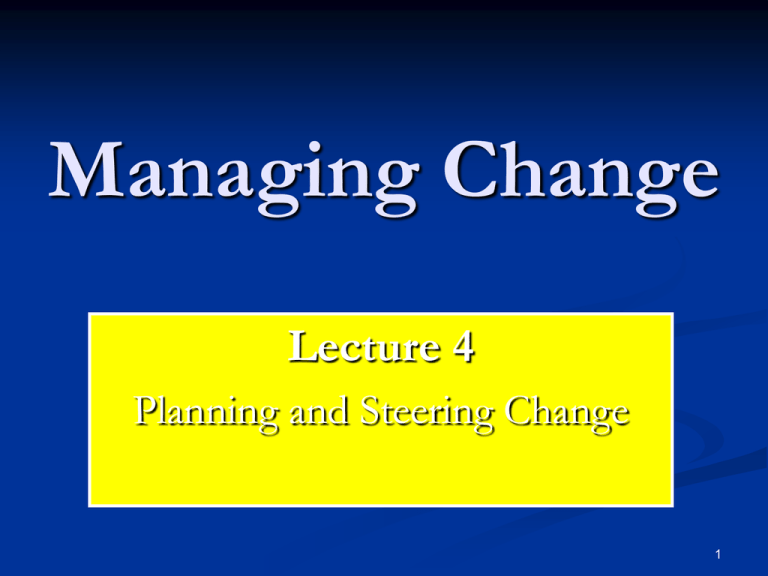
Managing Change Lecture 4 Planning and Steering Change 1 Lecture Outline Introduction Planning Engaging the levers for change Monitoring and review The agents of change The role of leadership A project management perspective 2 Introduction Once the need for change is recognized, it is necessary for someone with sufficient experience and influence to be assigned the responsibility of making it happen. It is important to remember that ‘few plan to fail but many fail to plan’. 3 PLANNING Deciding what & when action needs to be taken Estimating and securing resources Allocating roles and accountabilities Providing training to prepare staff for changes Setting deadlines and schedules Agreeing how progress will be monitored and reviewed 4 Forces For and Against Change Attitudes of individuals, work teams and others involved The impact of change on work practices The impact of change on quality and performance targets The effect on the Organization's products and services The availability of resources – equipment, technology, facilities, information and finance – to support the change 5 Creating a Vision for Change A key part of planning is to decide what you want to achieve, and what the outcome of the change will be – the VISION. Then specific objectives need to be set and agreed with the people involved. 6 ENGAGING THE LEVERS FOR CHANGE Having taken note of the forces for and against change, careful planning is undertaken for engaging the levers of change. Towards this appropriate tools are used, namely: SWOT (the strategy), TROPICS (the choice), Porter’s Value Chain and Competitive forces 7 SWOT Analysis Strengths – pockets of excellence in the firm (a strong brand, good supplier, strong sales, etc.) Weaknesses – (aging workforce, poor market position, outdated technology, etc.) Opportunities – favorable conditions in the firm’s task environment (access to growing market, new laws that might foreclose competitors, etc.) Threats – potential adverse conditions in the firm’s environment (increase of input price, competition from new entrants, etc.) 8 Porter’s Five Forces Model The threat of new entrants The threat of new products & services The economic power of suppliers The economic power of customers The repositioning of existing competitors. 9 The TROPICS Test Time scales Resources Objectives Perceptions Interest Control Source Refer to page 134 of Course Material. 10 Areas to understand before change to processes are initiated: Being clear about the purpose of the process and the outputs Establishing who does what, when, where, why and how – this involves monitoring the process Identifying options for making improvements Evaluating the options and deciding on appropriate action Flowcharting - diagram showing the sequence of events - page 137 Critical examination – page 138 11 MONITORING AND REVIEW It is important to monitor in order to Measure achievements against objectives Check progress against the plan Keep track of the use of resources Assess individual & team performance Ensure standards are maintained Anticipate problems and respond promptly 12 Areas Frequently Monitored Time scales Finance, materials & equipment Performance Quality Potential problems Changes in external circumstances 13 Monitoring Methods Observing people at work Examining the outputs of work Chatting informally Managing by walking about Collecting and analyzing data Discussing performance with the team Obtaining feedback from customers Ongoing SWOT & TROPICS tests 14 Evaluation When the change has been implemented, it is important to carry out a major review or evaluation and this should be planned right from the start. Other factors that could contribute to the evaluations: Discussing performance with the team members Talking to other departments Talking to both internal & external customers Collecting quantifiable information Feeding back the findings to managers, colleagues and others 15 THE AGENTS OF CHANGE The consultant who facilitates the change May be an independent person from outside the organization who is brought in solely to advice on and manage a change process, or Somebody who is already working with the Organization, but within a different function. The manager who has the genuine desire to change things 16 The 4 ‘Golden Rules’ for Change Agents Rule 1 – Change must be voluntary Rule 2 – Help solve a current or potential problem Rule 3 – Need to see a project through and move on Rule 4 – Must be an outsider to gain a degree of objectivity 17 The 7 skills for change agents Should be able to work independently Should be effective collaborators Able to develop high trust relations Should posses self-confidence Should respect the process of change Should be able to work across business functions Should be willing to stake rewards on results 18 THE ROLE OF LEADERSHIP LEADERS MANAGERS Take responsibility for Set clear objectives for the initiating changes change Emphasize and demonstrate Define the standards that commitment and persistence must be met to achieve goal Allows staffs to influence Encourage innovation and performance goals take calculated risks in the Help staff to develop long term interests of the specific plans to improve Organization. their performance Seek creative ways to resolve conflicts 19 4 Basic Leadership Styles Directive – Solves the problem & make decisions Consultative –consults with team members Participative – Shares responsibility by discussing Delegative – Team leaders delegate responsibility 20 Situational Leadership Source: Daft, R.L. (2008). The New Era of Management, 2nd Edition. Thomson South-Western, Ohio. 21 A PROJECT MANAGEMENT PERSPECTIVE RULE 1: Establish the need for change and make it clear to everyone RULE 2: Think through the change & analyze the benefits and resistance RULE 3: Initiate change through informal discussion RULE 4: Encourage people to voice their objections RULE 5: Be prepared to change oneself RULE 6: Monitor and reinforce the change 22 Additional Readings http://www.theoryofchange.org/pdf/Superw omen_Example.pdf http://www.au.af.mil/au/awc/awcgate/ndu/ strat-ldr-dm/pt4ch19.html http://www.marketingteacher.com/Lessons/l esson_swot.htm http://www.stfrancis.edu/ba/ghkickul/stuwe bs/btopics/works/swot.htm 23 References • Daft, R.L. (2008). The New Era of Management, 2nd Edition. Thomson SouthWestern, Ohio. • Robbins, S.P. and Coulter, M. (2007). Management, 9th Edition. Prentice-Hall, USA. 24

